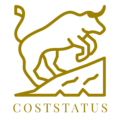
Learning Korean can be an exciting journey, especially for beginners who have access to the right tools. Duolingo stands out as a very user-friendly app, offering a straightforward path for learning Korean vocabulary in a fun way. Its gamified lessons make it easy to stay engaged, helping you build a strong foundation without feeling overwhelmed.
For those looking to deepen their skills, Korean classes with online tutors can provide a more personalized learning experience. Connecting with native speakers through this option allows you to practice real conversations, tailoring lessons to fit your learning pace. Engaging with a tutor gives you immediate feedback, making your study time more effective.
Another option for beginners is using structured programs that combine podcasts and video lessons. These formats allow you to hear proper pronunciations and contextual usage, adding depth to your language learning. Exploring various types of study materials can help you find the method that best suits your style.
Essential Features of User-Friendly Korean Learning Apps
When choosing a Korean learning app, certain features stand out for making the experience easier and more effective. These include interactive lessons, the ability to track your progress, and cultural insights.
Interactive Content
Interactive content engages you more actively with the language. Apps often include interactive exercises like quizzes, games, and flashcards to make learning fun. These elements help reinforce what you’ve learned by requiring you to use new vocabulary and grammar in context.
Engagement increases when you can manipulate the learning material to suit your needs. Features like drag-and-drop exercises and voice recognition allow you to practice speaking, listening, and writing skills. This makes the app more engaging and helps you retain information longer.
Progress Tracking and Feedback
Tracking your progress helps you see how far you’ve come and identify areas for improvement. User-friendly apps offer tools like daily streaks, goals, and progress charts. These features can motivate you by showing tangible evidence of your achievements over time.

Effective apps also provide immediate feedback. Correcting mistakes on the spot helps you learn more effectively. It’s essential to get guidance on pronunciation, grammar, and vocabulary as you go, so you avoid reinforcing wrong patterns.
Cultural Context Integration
Understanding the cultural context of a language enriches your learning experience. Apps that integrate cultural lessons or context give you a deeper view of how the language is used in real life. This can include aspects like traditional customs, everyday manners, and social norms.
Access to cultural notes and context can make language learning feel more relevant and interesting. These insights allow you to go beyond vocabulary and grammar to appreciate the language in its natural setting. It adds a real-world element that makes learning more meaningful.
Ultimate Recommended Korean Language Apps for Beginners
For beginners looking to learn Korean, some apps offer unique features that cater specifically to new learners. Each app provides a variety of strategies—from gamification to social exchange—to make learning engaging and effective.
Duolingo: Gamified Language Learning
This app is known for turning language learning into a fun game. You’ll earn points and move through levels as you learn Korean vocabulary and grammar. Its bite-sized lessons make daily practice feel like a game rather than a chore. You can track your progress and even compete with friends, which keeps you motivated.
The user-friendly interface is designed to make learning enjoyable. While using this app, you practice reading, writing, listening, and speaking Korean. The focus is on vocabulary and basic sentences, which is perfect for beginners just starting out. Since the app is free, it’s accessible to everyone.
LingoDeer: East Asian Language Specialist
This app specializes in languages from East Asia, offering a structured Korean course ideal for beginners. It breaks down complex Korean grammar and vocabulary into manageable lessons. The app includes detailed tips on pronunciation and grammar, helping you understand the language’s nuances.
With interactive exercises, including quizzes and flashcards, you continually assess your skills. This feature helps reinforce what you’ve learned, making it easier to remember new words and phrases. As you progress, the lessons become more challenging, ensuring you are improving without feeling overwhelmed.
HelloTalk: Social Language Exchange
This app connects you with native Korean speakers around the world. It focuses on real-life conversations rather than traditional lessons. By chatting through text, voice, or video, you practice Korean in a practical context. This is especially helpful for improving speaking and listening skills.

You can correct each other’s messages, offering immediate feedback. The app includes translation and pronunciation features, making communication smoother. While it might not replace traditional learning materials, it supplements them well by giving you exposure to casual, everyday Korean conversations.
Conclusion
When choosing an app to learn Korean as a beginner, focus on your learning preferences. Ensure the app you pick offers a user-friendly interface and interactive elements to keep you engaged.
Look for apps that encourage consistent practice with short, daily lessons. Using audio and visual aids can improve your understanding and retention of new vocabulary and grammar.
Don’t forget to explore options that allow you to connect with native speakers. This can provide valuable real-world practice and make your learning more dynamic and fun.
